

Name:
Class:




Name:
Class:

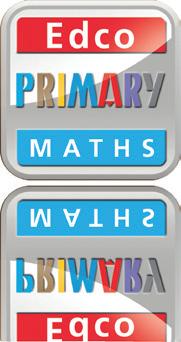


The Educational Company of Ireland
Mia Jay Lexi Dara Monty Mia Jay Lexi Dara Monty
Dear Family,
Welcome to Maths and Me, an exciting new maths programme that puts your child at its centre. Based on extensive research into the best way for children to learn maths, it has been designed to support and challenge all children. It is built on the belief that being successful at maths is about exploring, visualising, thinking, playing and talking about maths. It is about finding ways of working that suit each child. And it is about taking risks, since every mistake provides an opportunity to learn.
The ideas, activities and games in this book will help your child to experience maths and understand its relevance in their everyday life. Using the language of maths at home will enhance their learning. And it will be fun!
Top Tips!
Be positive.
l Families can have a significant impact on a child’s attitude towards maths. You can help your child to be positive about maths by sharing how maths is useful to you in your daily life.
Talk about maths.
l Talking about maths will help to expand your child’s mathematical vocabulary.
l Remember, maths is more than just numbers. Talk about shapes, measuring, money, time, patterns and data.
Keep trying.
l Encourage your child to try hard and keep practising. The brain is a muscle, and just like any other muscle, with work and effort it can grow and develop.
No pressure!
l Some children can get anxious about maths. Avoid putting pressure on your child to provide an answer quickly.
Mistakes are good.
l Recognise mistakes as learning opportunities. Ask your child how they arrived at an answer. Sometimes, when retelling what they did, they will spot where they went wrong.
l Encourage them to check their answer using a different approach. This encourages them to be flexible with their approach to maths problems.
Have fun together!
l Play games and do puzzles together. Any type of maths games and puzzles (board games, card games, dice games, etc.) will help your child enjoy maths, and develop their ability to understand and use numbers flexibly.
A Pupil/Parent App is available to support learning at home. It has digital resources for every unit. Follow the weblink on each unit page, or use the QR code here to access the web-based app.
Colour coding – the units are colour-coded so you can see the area of the curriculum they relate to.
This unit lays the groundwork for your child to gain a fundamental understanding of number. Young children engage in ‘matching’ activities to enable them to find out which objects are the ‘same’ and which are ‘different’. When they have mastered this concept, they can then confidently begin ‘sorting’ objects. They sort objects that are the ‘same’ into one set and discard those objects that are ‘different’ and therefore ‘do not belong’ to the set. ‘Sorting’ objects into sets has a direct link to your child’s understanding of number; once they understand what makes a ‘set’, they can more easily make sets for various numbers (example: a ‘set of three objects’, a ‘set of four objects’.
Support your child by:
l Using these words/phrases: same, different, belongs, does not belong. For example, these two saucers are the same. This book and cup are different.
l Matching objects that are the same (examples: two socks, two shoes).
This unit is about measuring length, height and weight. Support your child by:
l Using these words: long, longer, short, shorter, tall, taller, heavy, heavier, light, lighter, big, bigger, biggest, small, smaller, smallest. For example: Who is taller? Whose hair is longer? Which stick is shorter? Which shopping bag is heavier? Put these three pots in order: small, smaller, smallest.
This unit is all about counting from 1 to 10 but focuses on the numbers 1, 2 and 3. Support your child by:
l Helping them to count from 1 to 10 (in the correct order).
l Counting 1 to 3 objects. Try to ensure that your child is touching each object as they count (not counting one object twice).
l Watching out for the numbers 1, 2 and 3 around the house and outside.
l Making the numbers 1, 2 and 3 ‘creatively’ using playdough, pebbles, small twigs, shells, etc.
This unit is about making a sequence, spotting the errors in a sequence and things we do at different times of the day. Support your child by:
l Helping your child to sort out a collection of objects (examples: tidying up their toys, putting all the books together or all the bricks together).
l Using these words: now, next, later, earlier, before, after, first, last, then, over, yet. For example: We are going to the park now. First tidy your toys, and then we’ll read the story.
l Reading a story with a clear sequence of events (example: The Gingerbread Man).
l Reciting a nursery rhyme (example: ‘Humpty Dumpty’).
l Asking questions such as: What did Humpty do first? What happened next?
14 & 15)
This unit is all about counting from 1 to 10 but focuses on

Helping them to count from 1 to 10 (in the correct order).
l Counting 1 to 5 objects. Try to ensure that your child is touching each object as they count (not counting one object twice).
l Watching out for the numbers 1, 2, 3, 4 and 5 around the house and outside.
l Making the numbers 1, 2, 3, 4 and 5 ‘creatively’ using playdough, pebbles, small twigs, shells, etc.
l Reciting a number rhyme with your child, for example: One, two, three, four, five, Once I caught a fish alive. Six, seven, eight, nine, ten, Then I let it go again!
16 & 17)
This unit is about shapes. Support your child by:
l Using these words to describe 3-D shapes: round, straight, sharp, curved, flat, pointy, corners.
l Drawing your child’s attention to the shapes of different items (examples: round oranges, sharp corners on boxes).
l Helping them to build objects, using blocks or empty boxes/containers.
l Using the names of shapes (examples: cube, sphere, square, circle).
l Playing I Spy. For example: ‘I spy a shape that is round… I spy a circle.’
This unit is about counting from 1 to 10 but focuses on the numbers 0, 1, 2, 3, 4 and 5. Support your child by:
l Hiding an amount (0 to 5) of objects (example: raisins in your closed hand). Your child guesses how many raisins you have. They count the raisins and if they guessed the correct amount, they get the raisins! Of course, there might be ‘zero’ raisins.
l Making numbers using different materials (beads, string) or ‘drawing’ them (in the sand or in the air).
This unit is all about counting from 1 to 10 but focuses on the numbers 0, 1, 2, 3, 4, 5, 6, 7 and 8. Support your child by:
l Playing Guess Which Group Has More (example: put 5 pegs and 8 pegs on the table). Your child guesses which group has more. To find out if they are correct, they count each group. If their guess was correct, it’s their turn to make the two groups of pegs.
l Going on a Number Hunt. When outside, your child watches out for examples of numbers. Can they tell you which number they see?
l Helping them to draw a picture of a friendly spider (with 8 hairy legs!).
This unit is about spatial awareness, location and transformation. Support your child by:
l Playing Hide and Seek using spatial language (examples: on, in, under, between, above, below). Your child hides a teddy in a room. They use descriptive words to help you find the teddy (examples: Teddy is under… or Teddy is on… Or, Teddy is in…).
This unit is all about counting from 1 to 10 but focuses on the numbers 0 to 10. Support your child by:
l Writing the numbers 1 to 10 on paper. Your child cuts them out and puts them in the correct order.
l Putting a group of small objects together (example: 8 pieces of building blocks). Your child groups them in different ways (examples: 2, 2, 2 and 2 or 4 and 4). Then try a different amount.
l Asking your child to close their eyes. You tap six times on the table. Can they count the amount of times you tapped?
l Dropping coins into a jar/bowl. How many coins did you drop into the jar?
l Counting objects when you are out walking (example: ‘Can you find 7 green leaves/4 pine cones? Are there more leaves or more cones?’)
l Making ‘bundles of ten’ (example: your child gathers 10 twigs and makes a little bundle).
Unit 11: Measuring 2 (pages 28 & 29)
This unit is about capacity and area.
Support your child by:
l Using these ‘capacity’ words: empty, full, almost full, full to the brim, nearly empty.
l Using these ‘area’ words: cover, space, the most/least, smaller than, greater than.
l Making a game of putting lids back on containers (lunch boxes, jars, pots, etc.). Mix up all the lids (one lid has no match). Can your child find the ‘rogue’ lid?
l Finding out which object covers more space, e.g. a book or a notebook. How will we find out? Put the notebook on top of the book. Which object covers more space?
Unit 12: Operations within 10 (pages 30 & 31)
This unit is mostly about addition involving numbers up to 10. Support your child by:
l Involving your child in everyday activities involving addition. Example: Put those 2 yoghurts in the trolley. Can you get me 3 more? How many is that altogether?
Unit 13: Patterns (page 32)
This unit is about patterns. Support your child by:
l Helping your child to create a simple pattern. You start the pattern and your child goes next. For example, you put out a leaf, they put out a pebble, a leaf, a pebble, and so on. Or, a button, a coin, a button, a coin, and so on.
14:
(pages 34 & 35)
This unit is about money. Support your child by:
l Using these words: spend, buy, cost, how much?, altogether, coins, cent, price.
l Collecting coins (if you have them) in a bowl/jar. Ask your child to sort the coins into: 1c, 2c, 5c and 10c.
l Many adults use cashless payment methods, but it is very important to provide children with opportunities to handle and use coins when out shopping.
Unit 15: Fractions (pages 36 & 37)
This unit is all about sharing and combining.
Support your child by:
l Making a ‘fair share’. For example: There are 4 oranges; make a fair share between the two of us: one for you and one for me, and so on. Or you could use six seeds and two pots. How many will go into this pot? How many into that pot? Or how many toy cars will go into this garage? How many will go into that garage? Can you make a fair share?
l Sharing a whole object fairly between two people (examples: a bun, a small pizza, an apple).
l Finding ‘halfway/the middle’ of a ‘line’ (length of rope/ skipping rope/garden hose). Where is the middle?
Unit 16: Time 2 (page 38 & 39)
This unit is more about time. Support your child by:
l Making the days of the week personal. For example: On Sunday we go to… Today is Tuesday. What do we do today? (Go swimming/to piano lessons/play football, etc.).
l Pointing out ‘time’ all around us: on watches, phones, clocks, bells ringing, etc.
l Sequencing their day. For example: We’ve had breakfast; what meal comes next?
Unit 17: Data (page 40)
This unit is about sorting, collecting and displaying data. Support your child by:
l Sorting objects around the house. For example: Sort the pegs by colour; how many pegs of each colour are there?
l Going on a Nature Hunt and collecting small objects. Your child sorts the objects out. For example: How many pebbles? How many leaves? How many twigs? Which group has the most/least?
Draw a building that is taller than the tree house but shorter than the clock tower. Your building could be a skyscraper, a lighthouse… any building you like!
Measure and mark your child’s height at home. Measure and mark your height. Ask your child: who is taller and who is shorter? Measure your child’s height again in about six months’ time.
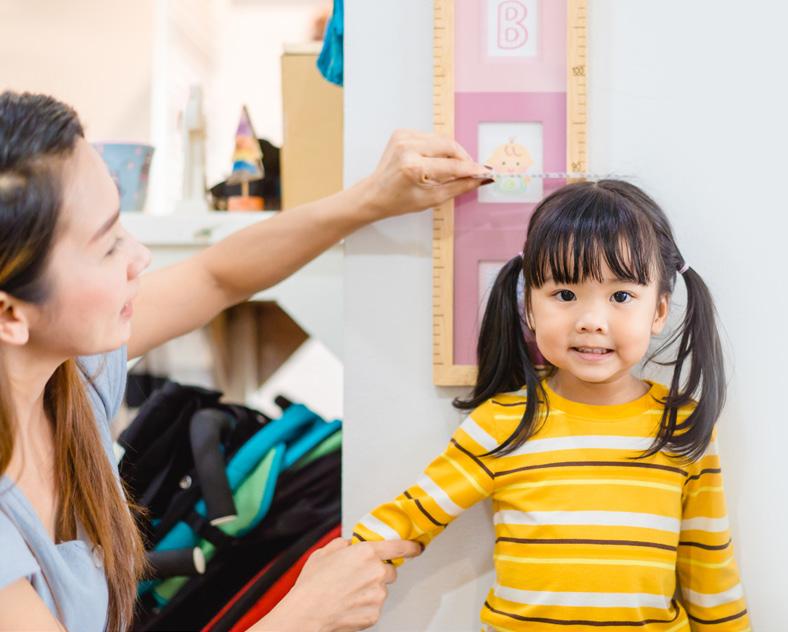
Draw around your hand. Has someone in your house got a bigger hand? Draw around their hand.
Let’s talk!
Ask your child to tell you the story of The Three Billy Goats Gruff. (They might need help!) Focus on the three different sizes of the goats.
Go on a hunt outside! Find the number of each object (example: 2 flowers). Colour them when you find them.


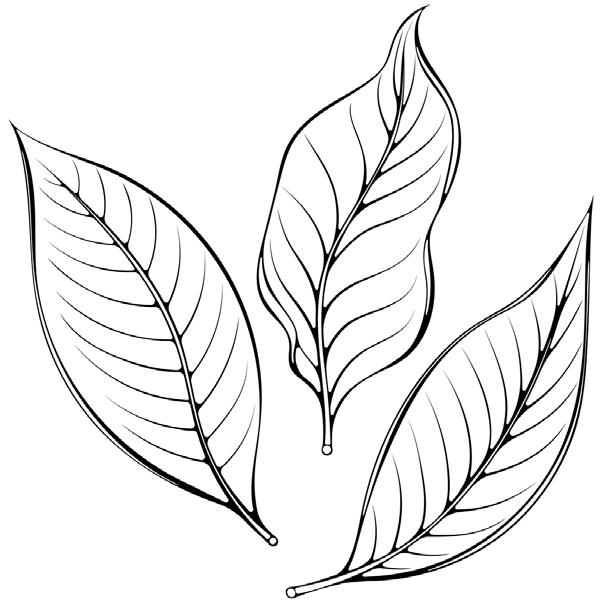

Colour each number. Trace over each number with your finger. Match each number to the correct amount.
Find the numbers I, 2 and 3 at home. You could look on packets, boxes, books, calendars, labels, etc.
Look for up to 5 of each object at home. How many of each can you find? Ring the correct number.



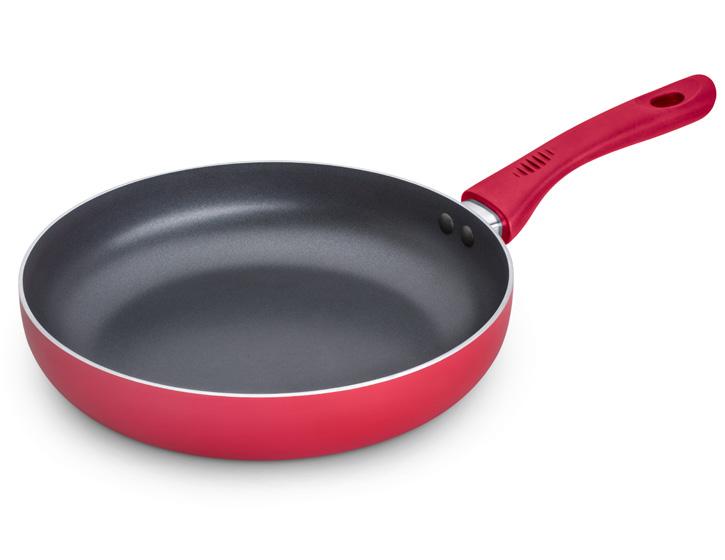


Use two colours to colour the clothes pegs. Example: 2 red and 3 yellow.
Sort your clothes pegs at home into their different colours. You could sort buttons or fruit instead.
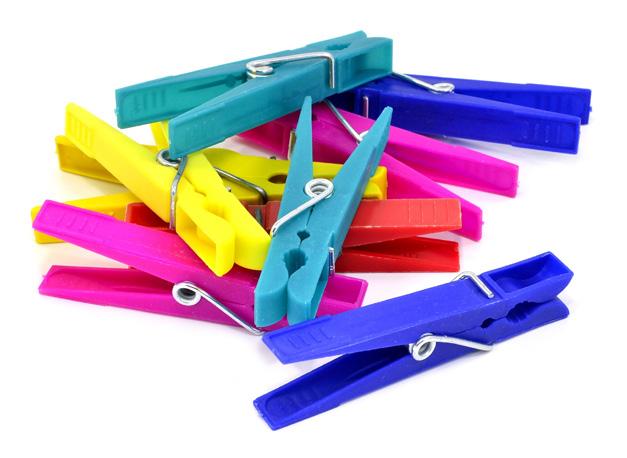
Help Snow White to find the dwarfs’ hats. Colour each one when you find it. Have you counted and coloured all seven hats?
Let’s talk!
Ask your child: can you find another seven objects around the house (such as seven clothes pegs or seven spoons)? Can you count them?
Ring the correct word. Colour the picture.
on in in on up down under over over under down up
Let’s play!
l Play Hide and Seek with your child.
l Hide an object. Use the words under, over, in, on, up and down as clues to help your child find the object. For example: ‘The object is under the rug.’
Find the same shape at the bottom of the page. Use the same colour to colour it.
Let’s talk!
Draw and cut out some triangles, squares and rectangles. Ask your child to name each shape. Move each shape into different positions (upside down, etc.). Can your child still identify each shape?
Count the number of each sea creature. Colour each group a different colour.
Which animal is on its own?
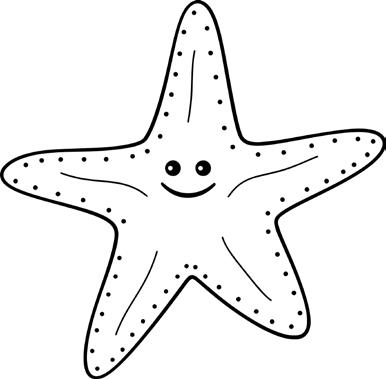














Can you find space to draw 4 ?
Digital resources: edco.ie/xxxx. For





You will need: ‘toppings’ for the ice-creams (small items such as buttons or pebbles). Ask your child to ‘share’ the toppings between the two ice-creams.



Let’s talk!
Ask your child: how will we make fair shares of an apple, a biscuit or six sweets?
Here are 8 bean seeds for the vegetable patch. Can you share the seeds into each part of the vegetable patch? How many will you draw in one part of the patch?

